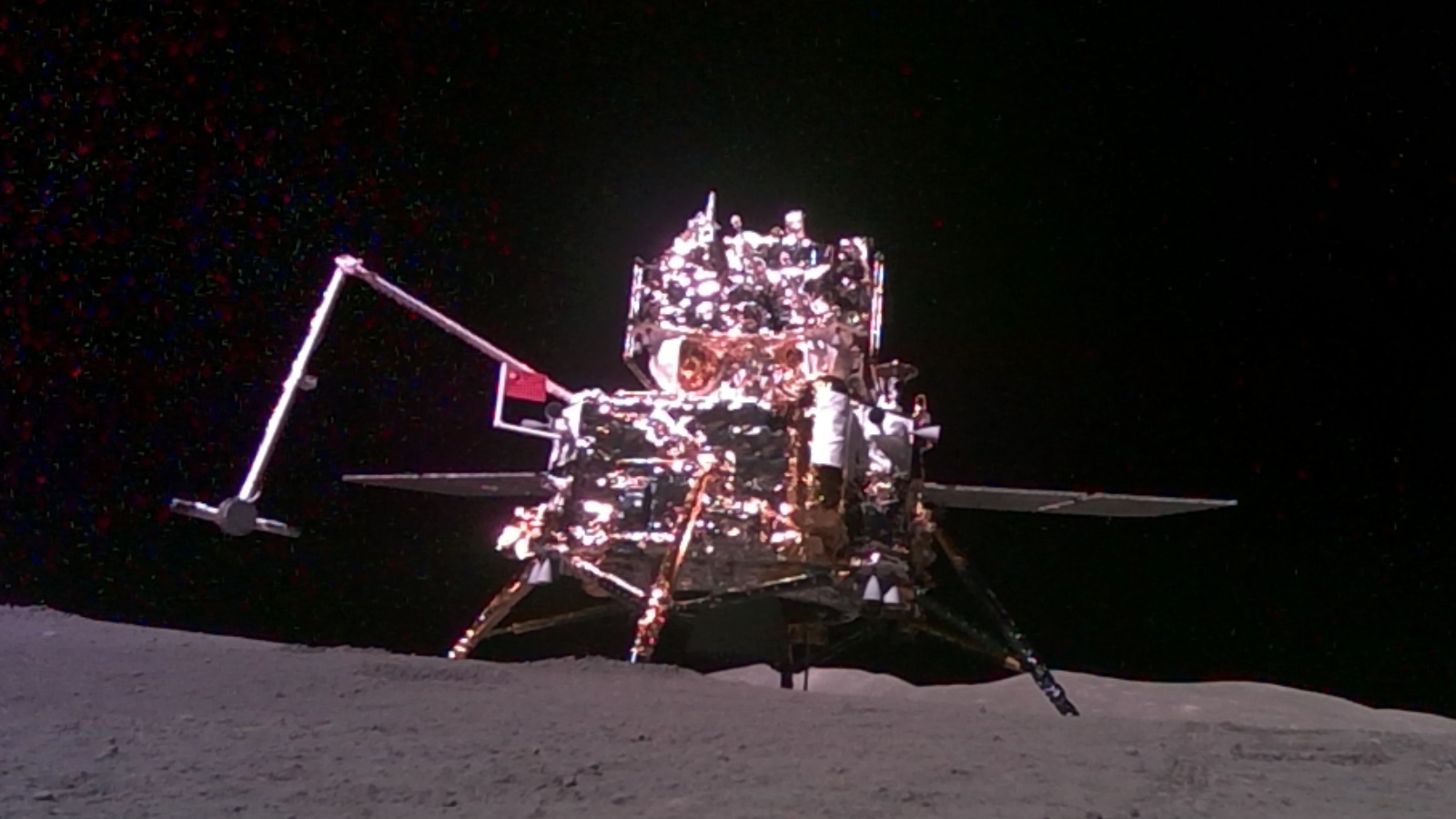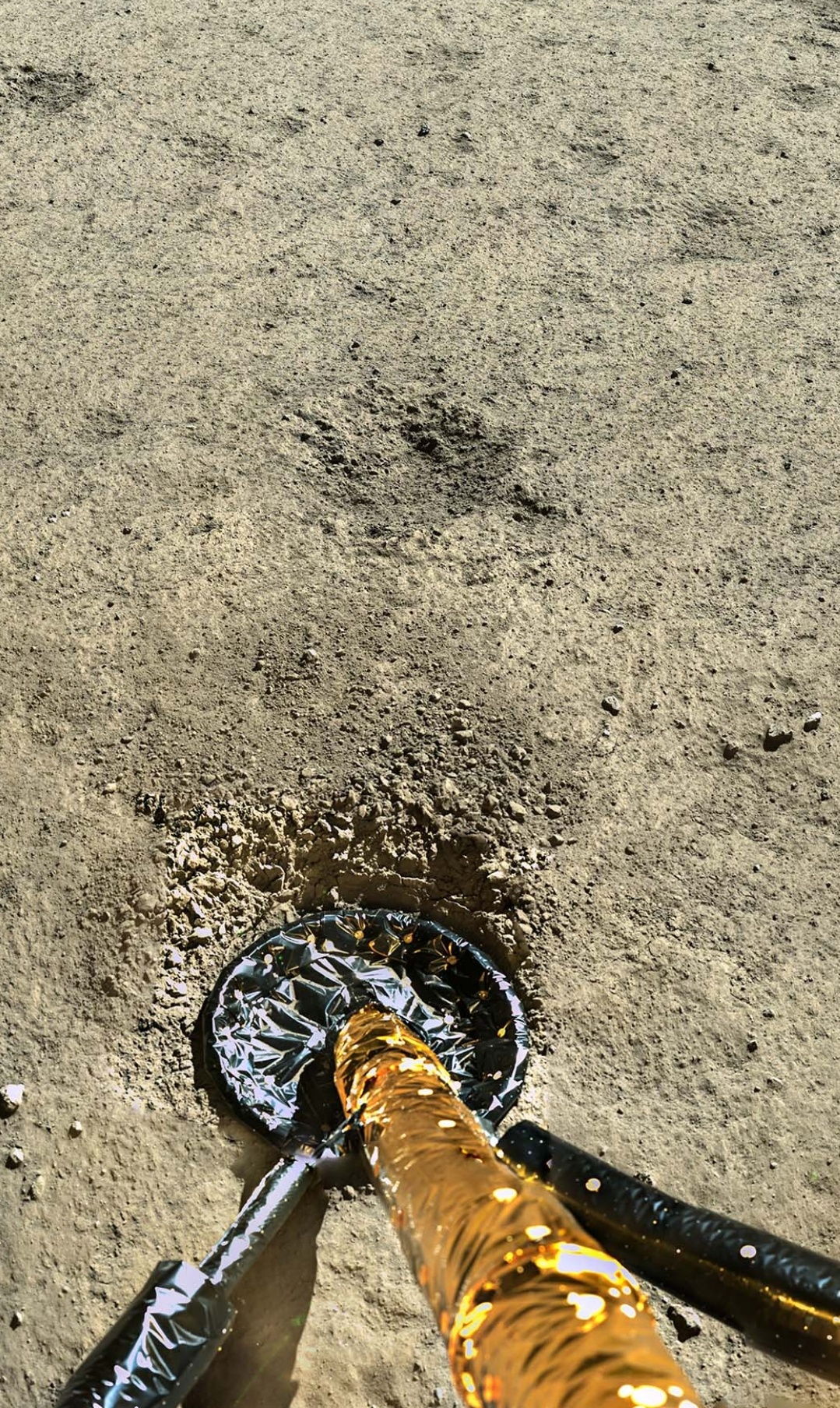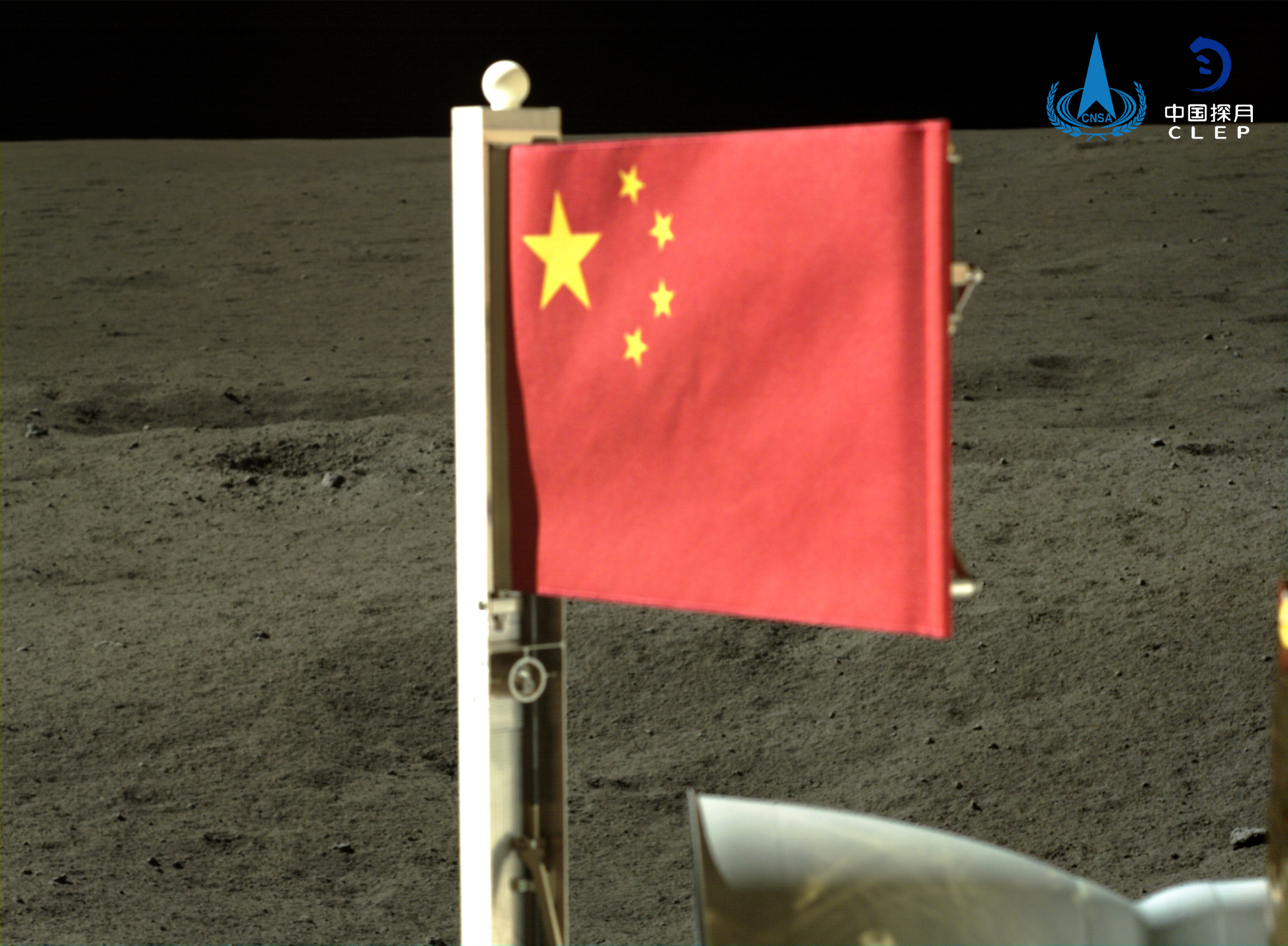China's Chang'e 6 probe launches samples of far side of the moon to lunar orbit. Next stop? Earth (photos)
The China moon mission is proceeding at a high pace as collected samples begin their historic journey back to Earth.

China's Chang'e 6 lander has sent home stunning images of the lunar surface on the mysterious far side of the moon.
Additionally, the China National Space Administration (CNSA) has released stunning footage that shows the lunar far side samples the lander has been collecting over the past two days. The samples were launched to orbit at 7:38 a.m. Beijing Time on Tuesday, June 4 (7:38 p.m. EDT on June 3).
Chang'e 6 landed in the unexplored Apollo Basin crater within the larger South Pole-Aitken (SPA) Basin located on the far side of the moon on the morning of Sunday, June 2, Beijing Time.
The new images and video show that this historic mission, which represents only the second soft landing on the hemisphere of the moon that perpetually faces away from Earth, is progressing at an impressive pace.
Related: Watch China's Chang'e 6 probe land on far side of the moon in dramatic video
"China's Chang'e 6 ascender separated from the lander and lifted off from the South Pole-Aitken Basin on the moon at 7:38 a.m. Beijing Time on June 4," CNSA said in a statement. "It is carrying lunar samples gathered during the past two days. After about six minutes, it entered the targeted orbit and will begin several orbital maneuvers in the next step of the process."
The samples will be snagged from orbit by the Chang'e 6 orbiter, which remained in space around the moon after the ascender rocket departed from it for landing, carrying the Chang'e 6 lander to the lunar surface. If this operation goes according to plan, the sample canister will be parachuted back to Earth on June 25.
Breaking space news, the latest updates on rocket launches, skywatching events and more!
This will be a historic event as it will be the first time that samples have been collected from the far side of the moon and returned to our planet for study.
Before the samples were blasted from the surface of the moon, CNSA Watcher also shared incredible footage on its Youtube channel that showed the first moon and rock being collected from the Apollo basin.
The Chang'e 6 lunar surface images were shared via China Aerospace's Weibo account, and then these were reposted via the X account CNSA Watcher.
"Save! #嫦娥六号# [Chang'e 6] The high-definition image of the landing site taken by the lander's panoramic camera, zoom in to see the details of the lunar surface," the CNSA wrote on Weibo.
Chang'e 6 lander's panoramic camera captures high-definition images of the landing site, revealing detailed lunar surface. Source:https://t.co/lCulGS43mp pic.twitter.com/4AH0RXG3WiJune 4, 2024
Other images shared by the CNSA that were taken by Chang'e 6's lander camera included a view of the lander's leg firmly planted on the lunar surface.
In another image, this remarkable acheivement for China and its CNSA is celebrated by a view of the chinese flag with the lunar surafce in the background.
Chang'e 6, named after the Chinese goddess of the moon, is the second mission to soft land on the far side of the moon. The last mission to do so was Chang'e 4 back in Jan. 2019.
This means that, at the moment, China is the only nation that has successfully landed on the hemisphere of the moon that faces away from Earth.
Following the CNSA's success in landing spacecraft on this tricky region of the moon, the next two Chang'e missions will target the lunar south pole. This polar region is set to be the focus of future human exploration of Earth's lunar companion.
Chang'e 7 is set to arrive at the lunar south pole in 2026, where it will hunt for stores of water ice. Scheduled to launch two years later, in 2028, Chang'e 8 will explore possible in-situ uses for the resources, such as water ice, that its predecessor uncovers.
This will be used to determine how lunar materials could be used to bolster crewed lunar exploration, with the CNSA planning to move humans to the moon by 2030.

Robert Lea is a science journalist in the U.K. whose articles have been published in Physics World, New Scientist, Astronomy Magazine, All About Space, Newsweek and ZME Science. He also writes about science communication for Elsevier and the European Journal of Physics. Rob holds a bachelor of science degree in physics and astronomy from the U.K.’s Open University. Follow him on Twitter @sciencef1rst.





